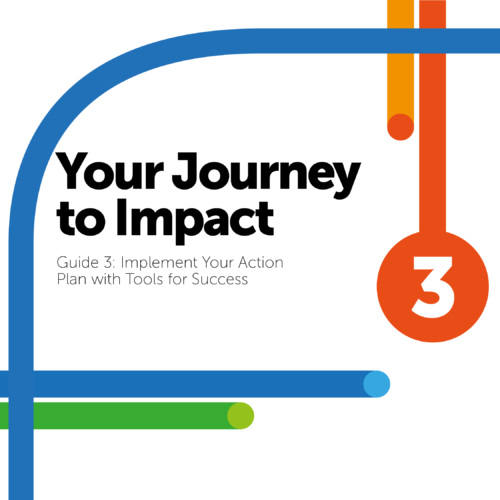
Download the Guide
Want Guide 3?
Become a member to gain access
Join for free to get access to Guide 3.
Implement Your Action Plan with Tools for Success
Your Journey to Impact offers strategic ways your business can support education to create the future that all children deserve. Whether you are in charge of corporate responsibility, corporate giving, social and environmental impact, or lead a corporate foundation, you can make meaningful impact by learning about and investing in education. Our three guides are designed for leaders who want to learn about how, when, and where to invest in education.
Download the Guide
Join for free to get access to Guide 3.
Thoughtful, strategic corporate philanthropy helps communities first and foremost, and also offers a halo effect for companies. Benefits include an enhanced public image, improved work environment for employees, and stronger relationships with consumers or clients.
There are many ways companies can involve employees in volunteer programs. They can provide opportunities to mentor or tutor students or take part in career shadowing programs. Companies can also match employee donations to nonprofits.
CEOs can champion education and exercise significant influence through advocacy, networking, and political engagement.
Education can support a company’s ESG goals, including climate, public health, inclusion, financial literacy, and entrepreneurship.
Download the Guide
Join for free to get access to Guide 3.
Working with civil society organizations, including education nonprofits, can be an effective way for companies to achieve their philanthropy and CSR goals. Nonprofits deliver direct on-the-ground services, welcome corporate volunteers, guide advocacy efforts, and more.
When companies join forces and work toward a common education goal or initiative, they amplify impact and often accelerate results.
There are many examples around the world of private-public partnerships embedded into local and national governments that provide access to private-sector funds. Often these partnerships involve community-based nonprofits, but just as frequently, they are established to contribute private funds to public services, such as investing in local schools.
Business associations can maximize joint efforts in support of education. These organizations attract companies of various sectors and sizes to implement education programs, invest in policy discussions, and carry out campaigns to raise awareness of national and regional education issues.
Intermediary organizations—groups that connect the business sector to opportunities for social impact—play an important role providing direction and support to companies that want to invest in education. They are especially helpful to companies with no direct experience or that lack the necessary infrastructure to navigate school districts on their own.
While GBC-Education is a prominent model of a global alliance– its network comprises more than 150 influential private sector companies–other complementary global coalitions for corporations offer opportunities to support equitable, inclusive, and quality education for all.
Download the Guide
Join for free to get access to Guide 3.











